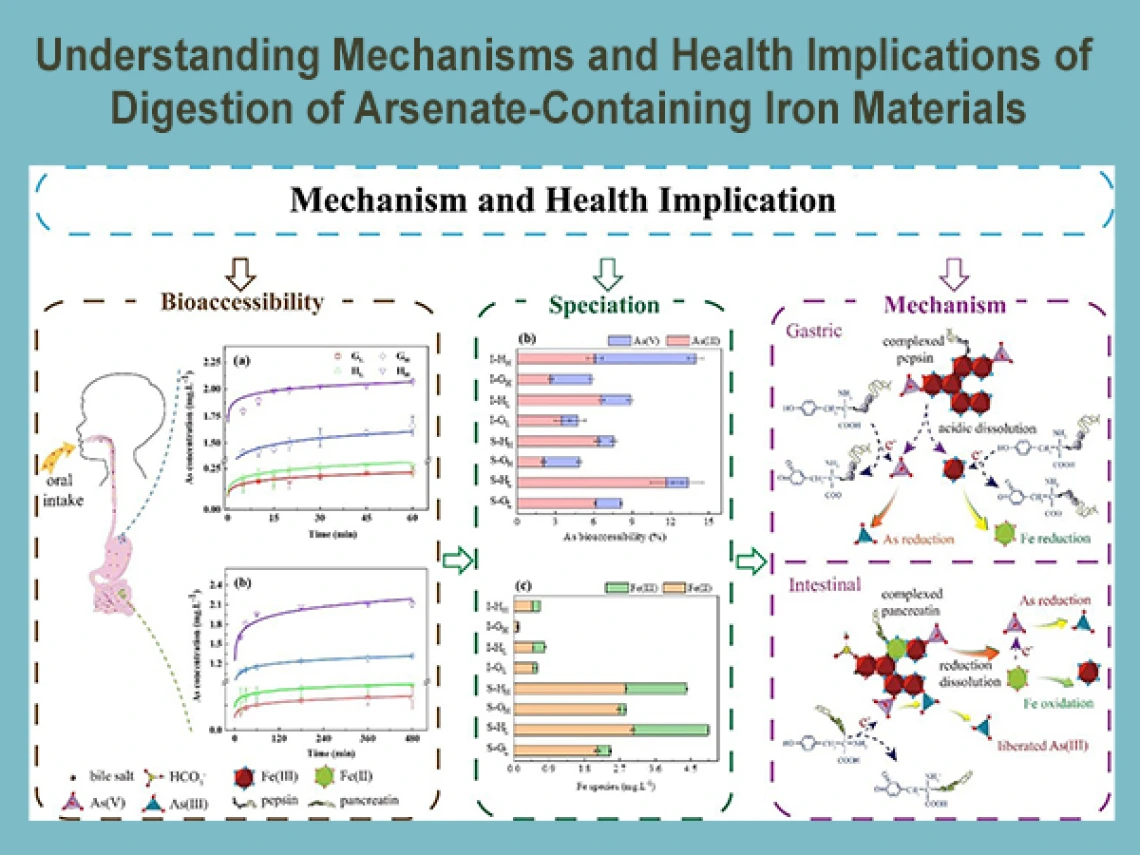Understanding Mechanisms and Health Implications of Digestion of Arsenate-Containing Iron Materials

Inadvertent oral ingestion is an important exposure pathway of arsenic containing soil and dust. Previous research provides evidence of health risks from bioaccessible arsenic in soil and dust, yet our understanding of arsenic mobilization from soil and dust into bioaccessible forms remains nascent.
Researchers from the University of Arizona Superfund Research Center (UA SRC) recently studied the mechanisms and health implications of gastrointestinal digestion of arsenate-containing iron minerals to understand more about this exposure pathway.
This study investigated arsenic release behaviors and the solid–liquid interface reactions of arsenic pentoxide-containing iron minerals in simulated gastrointestinal bio-fluids (Liu et al., 2023). The highest amounts of arsenic were released from arsenic-containing goethite and from arsenic-containing hematite at 9 hours, at which time the arsenic bioaccessibility was 10.8% and 21.6%, respectively. Higher amounts of arsenic released from hematite in gastrointestinal fluid were observed, even though goethite initially contained more arsenate than hematite.
A mechanistic analysis revealed that arsenic release was mainly coupled with acid dissolution and reductive dissolution of iron minerals. Proteases from the gastrointestinal bio-fluids enhanced arsenic mobilization and thus increased arsenic bioaccessibility. Further, as arsenic pentoxide was released it was simultaneously transformed to the more toxic arsenite by gastric pepsin, while arsenic pentoxide reduction in intestine was triggered by pancreatin and freshly formed iron II oxide in gastric digests.
Calcium chloride reduced arsenic bioaccessibility, indicating that calcium-rich food or drugs may be effective dietary strategies to reduce arsenic toxicity.
The results further the understanding of the arsenic release mechanisms associated with iron minerals in the simulated gastrointestinal tract and suggest a possible simple dietary strategy to alleviate the health risk of incidental arsenic intake.
Publication:
Liu, R., Kong, S., Shao, Y., Cai, D., Bai, B., Wei, X., Root, R. A., Gao, X., Li, C., Chorover, J. (2023). Mechanisms and health implications of toxicity increment from arsenate-containing iron minerals through gastrointestinal digestion. Geoderma, 432.

